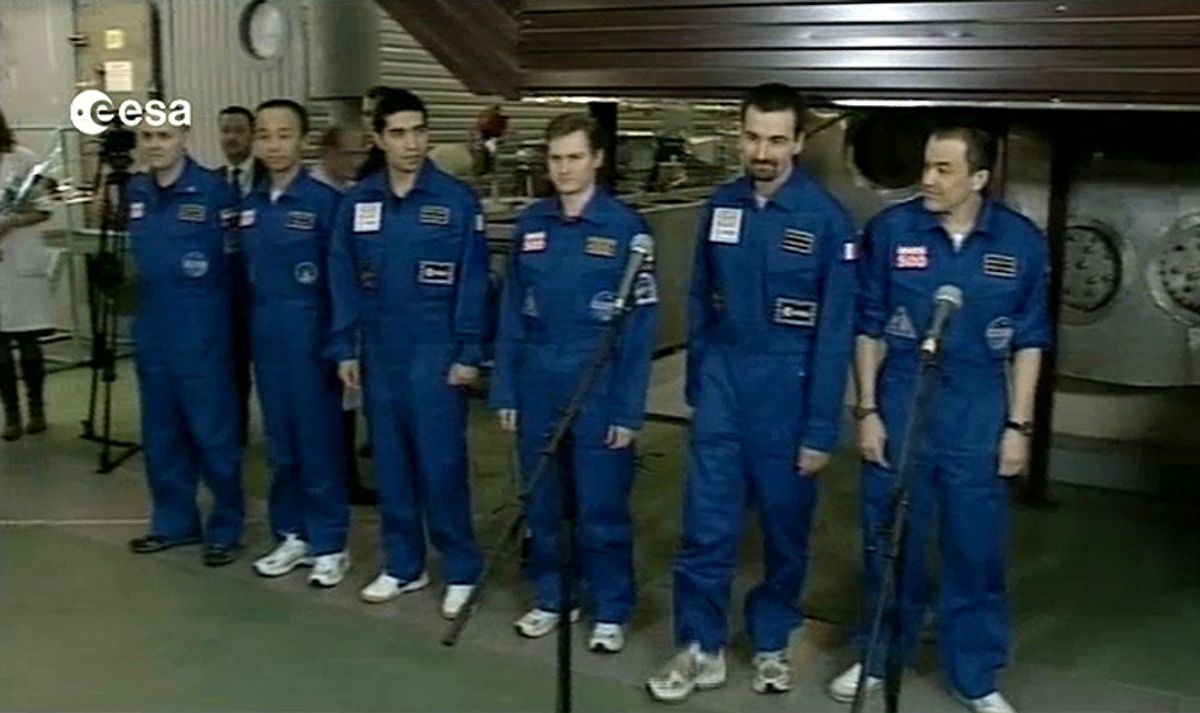At 10 am Greenwich Mean Time this morning (2 pm local time), six volunteers stepped out of a one-bedroom-apartment-size isolation pod at the Russian Academy of Sciences' Institute of Biomedical Problems (IBMP) in Moscow that they had shared for the previous 520 days. The aim of the Mars500 experiment was to learn more about the psychological and physical effects that a 250-day trip to Mars, a 30-day stay on the Red Planet’s surface, and a 240-day return will have on humans. In other words, it answered a question similar to the one asked in intro of the old TV sitcom “The Odd Couple”: Can six strangers share a cramped apartment without driving each other crazy?
The answer apparently was yes, though there was no way to be sure beforehand. In 2000, a similar experiment came to an abrupt halt after 420 days when two participants got into a drunken fistfight and a third made unwanted sexual advances toward a female crewmember. But there were no such contretemps this time around. Italian crewmember Diego Urbina confirmed that things went relatively smoothly. “It was like a normal life on board. Not everybody had to be everybody’s friend,” said Urbina.
“Thank you very much for your outstanding effort,” said Jean-Jacques Dordain, Director General of the European Space Agency (ESA), in his greeting from Paris after the crew stepped from their module. Three ESA astronauts participated in the virtual Mars mission. “I welcome the courage, determination and generosity of these young people who have devoted almost two years of their lives to this project, for the progress of human space exploration,” said Dordain.
While locked inside a mock spaceship , the all-male crew—three Russians, and one each from China, Italy, and France—dealt with conditions that they would have to face if they were hurtling through space. For instance, there was a limited supply of food, and messages sent from the crew were answered with a 25-minute time delay to replicate the communications lag that they would experience if they were on the surface of Mars. All the while, IBMP researchers were able to keep tabs on the earthbound space travelers using more than 30 cameras that watched their every move except for when they were in a private, 3-square-metre bathroom chamber.
During the experiment, which began on 3 June 2010, the team carried out all the activities of a real interplanetary mission. In February, Urbina, along with Alexandr Smoleevskiy from Russia, and Wang Yue from China, conducted a virtual landing and subsequent surface exploration. This called for putting on 32-kilogram spacesuits and clambering from the habitat module where they spent most of their time into a module that simulates a Martian-lander ship. The trio then made their way into a dark, sand-filled module that represented the Martian surface.
All told, the crew carried out more than 100 experiments, mainly focused on the discovering and ironing out the problems that will crop up during long-distance space missions. The only major elements of a a real 54-million-kilometer flight to Mars that were missing were weightlessness and cosmic rays.
“It is great to see you all again,” said Urbina after emerging from isolation. “On the Mars-500 mission, we have accomplished on Earth the longest space voyage ever so that humankind can one day greet a new dawn on a distant but reachable planet.”
Although now free from the pod, the crew is still in for four more days of isolation. After a brief press availability this morning and reunions with their families, they went into quarantine. There they will undergo a series of tests to gauge their physical and mental fitness. They are scheduled to speak to the media again on 8 November.
Willie Jones is an associate editor at IEEE Spectrum. In addition to editing and planning daily coverage, he manages several of Spectrum's newsletters and contributes regularly to the monthly Big Picture section that appears in the print edition.



